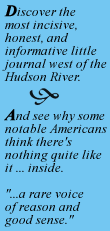
The
follow is a summary of the June, 2005, issue of the St. Croix
Review:
In
the editorial Angus MacDonald discusses the case of Terri Schiavo, the
attitudes of the judges, abortion, the Ten Commandments, Natural Law,
and Positivism, in “Terri Schiavo—Life, Death, and Law.”
In
“Our Current Policy Is Working” Herbert London cites
examples in Iran and Egypt that show President Bush’s success; in “The
Meaning of Middle East Peace Talks” he reviews the
Israelis/Palestinian conflict with some hope; he writes of a dangerous
alliance between Hugo Chavez of Venezuela and Iran in “Subversion
on Our Back Door”; he makes a distinction between free speech
and academic freedom in “Anti-Semitism and Academic Freedom at
Columbia”; in “Rapping Rap” he writes about
the astounding success of rapper 50 Cents, and the awful effects on
society; he says that conventional wisdom is wrong in “The
Public’s Revulsion with TV.”
In
“The Paroxysm of Rage” Anthony Harrigan believes we
are headed for world-wide turmoil. While the populations of developed
nations dwindle, mass movements of peoples from poor into developed
nations will cause friction. The danger is that our Western heritage
will be lost, and in the process the U.S. will be made a scapegoat.
Allan
Brownfeld in “The Time Has Come to Secure U.S. Borders—Our
National Security Depends Upon It” writes that the President and both parties are ignoring an influx of
illegal immigrants, even after repeated warnings.
In
“The Canada Problem” Arnold Beichman shows how
unprotected our northern border is; and in “UN Human Rights and
Wrongs” he identifies the malefactors controlling the UN
Commission on Human Rights and writes that they undermine the entire
purpose of the United Nations.
R.
Andrew Newman remembers his father and a vanished world, in “Priest
to the Temple.”
Colonel
Melvin Kriesel has edited an after-action report, “The Battle of
Salman Pak” that relates the events of an attack on a supply
column south of Baghdad by 40 to 50 heavily armed insurgents. This
incident reveals the everyday heroism of our soldiers. It is noteworthy
that the intelligence officer who wrote the report anticipated
nationwide attention from the media. What coverage there was, was
momentary and minimal.
Harry
Neuwirth sees the U.S. efforts in Iraq as unique and benevolent, in “The
American Wars.”
In
“Forget Free Speech, Liberals Don’t Tolerate Campus
Conservatives,” John Plecnik cites instances when liberals on
campus have displayed a great depth of hatred.
In
“Gender Roles and Marriage,” Brian Moore exposes basic
contradictions underlying leftist thinking.
Jigs
Gardner draws a distinction between true environmentalists and the
man-hating, technology-despising Greens, in “Greenism vs.
Mankind.” He points out that as our knowledge expands we learn
how to “work with” nature, and had we not done so from the
beginning, we would have died out in pestilence ages ago.
Martin
Harris creates a analogy with lions and wildebeests to describe the
depredations of regulators in “Monkton: A Planning Fable.”
In
“The Precautionary Principle,” John D’Aloia Jr.
writes that our lawmakers believe that they must protect us from
ourselves.
In
Part II of “The American Way: How Faith and Family Shaped the
American Identity,” Allan Carlson continues his article on the
views of historical figures. In this article he discusses Henry Luce,
Ronald Reagan, and others.
Robert C. Whitten reviews Born Fighting: How the Scots-Irish Shaped America, by Robert C. Whitten

[ Who We Are | Authors | Archive | Subscription | Search | Contact Us ]
© Copyright St.Croix Review 2002